|
|
|
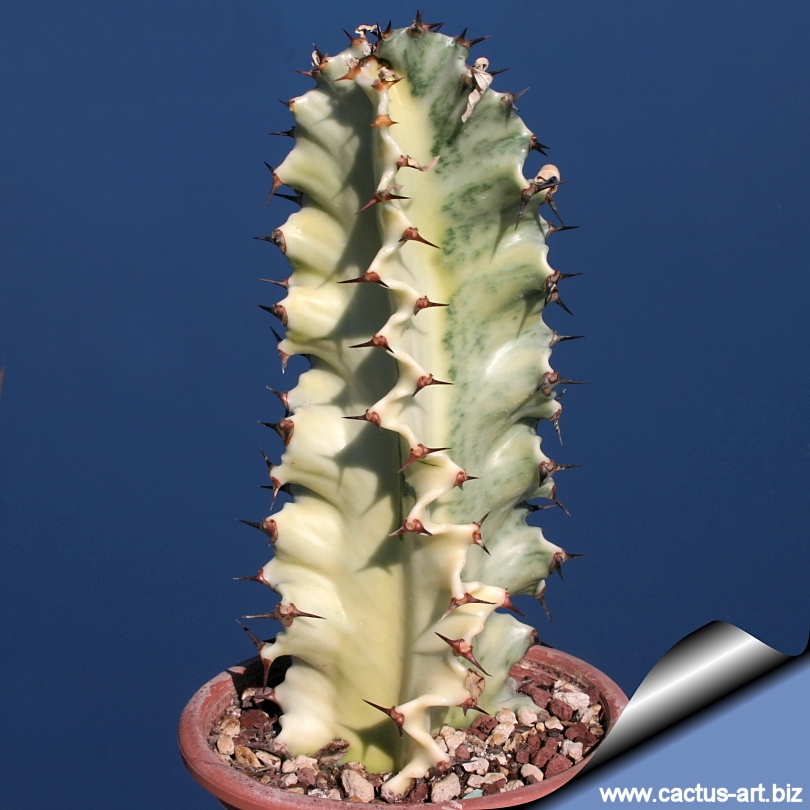
Euphorbia
Erythraea forma variegata
Where a potted plant with a strong sculptural quality is required
this Euphorbia is the right one. With its cream, yellow and pale-green
variegated stems it makes a wonderful indoors plant!
|
|
Description: Euphorbia
candelabrum (erythraea) is a typical representative of large,
tree-like Euphorbias that can grow up to 10 (or more) m tall (with a
short trunk up to 90 cm in diameter), it is superficially similar to
some new world Cacti (e.g. Cereus peruvianus) . The
upright inverted umbrella shape ( broadly obconical crown) of this plant
make it looks like a a branched organ-pipe or a candelabra (hence the
name).
Stem: Stem stout, upright growing, cactus-like, slightly
constricted at irregular intervals into segments, one trunk may produce
more than150 branches as thick as a man's leg. They are deep green with
a clean and smooth epidermis.
Ribs: Thick, undulate, 3-8 angled (but usually four-winged),
dark-green, wavy when only in seedlings.
Spines: Paired, horn shaped, (may be absent in older plants)
Leaves: In the right climate (wet and warm at the same time) it
will produce simple lancelate leaves near the top of each branch. These
leaves are much larger and more prominent in the green form than in the
variegated/yellow forms. On the seedling they are up to 40 mm long and 7
mm wide, but in the young shoots they are smaller.
Flowers: Yellow-green, in small clusters fo 3-6 above the pair of
spines, fleshy, with 5 glands. Female flowers carry a three part pistil
over a three part ovary, producing three or sometimes more seeds.
Fruit: green, 2-3 loculed, pea sized.
Remarks:
Itís one of the more poisonous spurges. The latex which is
very bitter and acrid contains diterpenes and is considered highly
toxic.
|
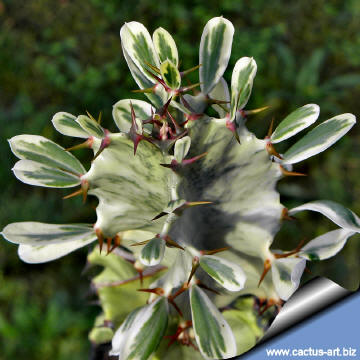 |
 |
|
. |
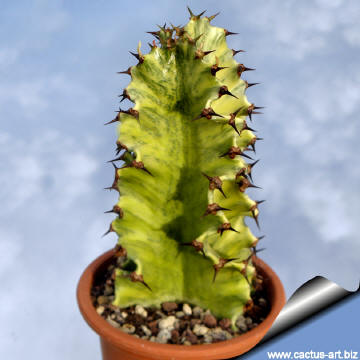 |
 |
|
. |
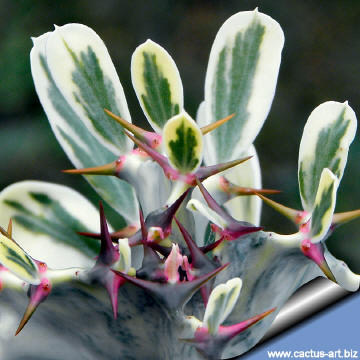 |
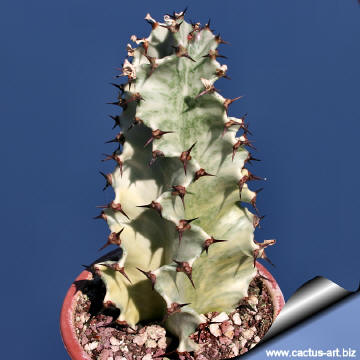 |
|
This is a very showy
variegated plant which grows arms over time. the colours vary with
green, cream and white. Plant edges are wavy with short, brown, cow-horn
spines. |
|
Advertising
|
|
|
|
|
Family: Euphorbiaceae
Euphorbia erythraea Hemsl., 1894
Accepted
scientific name: Euphorbia
candelabrum trem. ex Kotschy
In: Taxon 30(2):483-485 1857
Common English Names include: Ghost
Euphorbia. Variegated
Candelabra Spurge.
Origin: Euphorbia candelabrum (erythraea) is
widely distributed from southern Africa to aeastern africa, it is
nowadays cultivated all over the world.
Habitat: Rockier areas from planes to
steep hillsides, savannah grasslands, thorny bush-lands, this species
often forms forests that dominate hillsides, sometimes forming pure
stands, often around churches; locally abundant or common.
Conservation status: Listed in
CITES appendix 2.
Synonyms:
- Euphorbia erythraeae (Berger)
N.E.Br. 1912.
- Euphorbia candelabrum var. bilocularis
(N.E. Br.) S. Carter, 1987.
- Euphorbia candelabrum var. candelabrum
- Euphorbia candelabrum var. erythraeae
Berger
- Euphorbia abyssinica J.F.Gmel.A
Euphorbia candelabrum (which
according to some authors, is synonymous with Euphorbia ingens,
while other consider the two plants as distinct species) Euphorbia candelabrum (erythraea)
is the classic candelabrum tree of East Africa. With its widespread
occurrence this plant is in some ways the iconic Euphorbia of the
African continent.
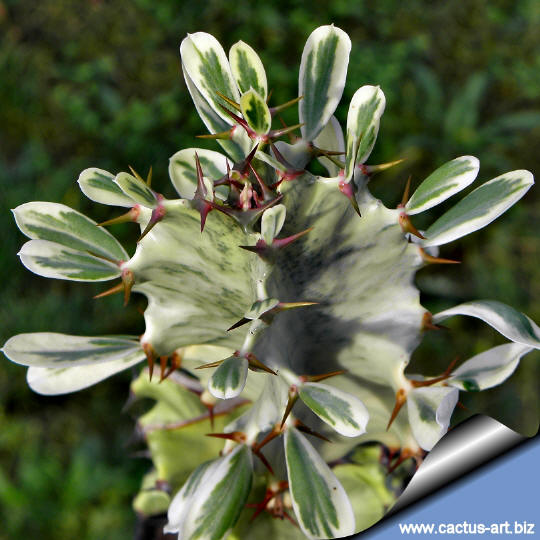
|
|
|

Cultivation: It is an easy species to grow that is suited for any
well drained soil in full sun. But young plant are happy growing
indoors, where they can easily reach the ceiling. Give the plant an airy
growing medium which mainly consists of non organic material such us
clay, pumice, lava grit, and only a little peat or leaf-mould. Water
regularly during the active growing season from March to September. No
water should ever be allowed to stand around the roots. Keep almost
completely dry in winter. It is a moderately fast grower, and will
quickly become large landscape masterpieces in just 3-5 years. Only
downside is from strong winds, the columns often smash into each other,
causing permanent scarring... best to plant in such a location where
winds are not a big issue. If plant becomes very red, this is a sign
that the roots have not developed properly. It is a relatively fast
growing and long lived plant and once established, it will be content in
its position and with its soil for years. It can tolerate moderate
shade, and a plant that has been growing in shade should be slowly
hardened off before placing it in full sun as the plant will be severely
scorched if moved too suddenly from shade into sun. Like quite small
pots, repot in very later winter, early spring. Can be pruned for shape
and branching. Frost tender, frost free zones only.
Propagation: It is
easy to propagate by cuttings in late siring to summer, just take
a cutting of the plant let it dry for 1 or 2 weeks and stuff it in the
ground (preferably dry, loose, extremely well draining soil).

 |
|